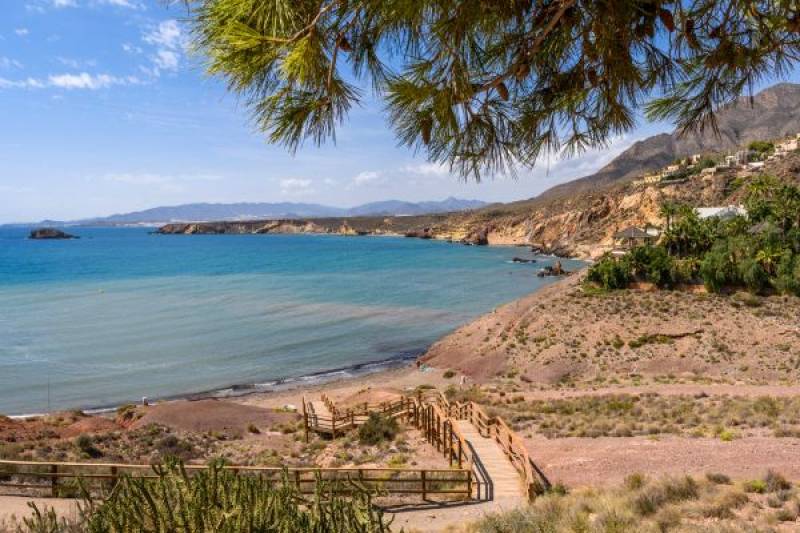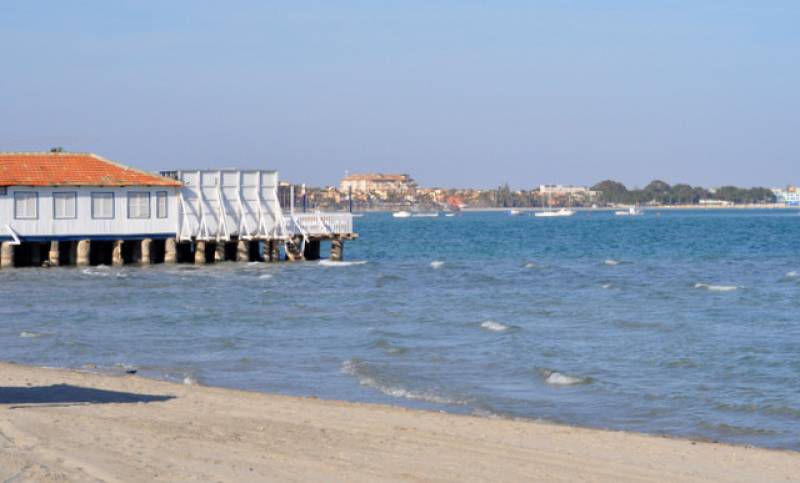
To be listed on the CAMPOSOL TODAY MAP please call +34 968 018 268.

Guidelines for submitting articles to La Manga Club Today
Hello, and thank you for choosing La Manga ClubToday.com to publicise your organisation’s info or event.
La Manga Club Today is a website set up by Murcia Today specifically for residents of the urbanisation in Southwest Murcia, providing news and information on what’s happening in the local area, which is the largest English-speaking expat area in the Region of Murcia.
When submitting text to be included on La Manga Club Today, please abide by the following guidelines so we can upload your article as swiftly as possible:
Send an email to editor@lamangaclubtoday.com or contact@murciatoday.com
Attach the information in a Word Document or Google Doc
Include all relevant points, including:
Who is the organisation running the event?
Where is it happening?
When?
How much does it cost?
Is it necessary to book beforehand, or can people just show up on the day?
…but try not to exceed 300 words
Also attach a photo to illustrate your article, no more than 100kb

Establishment of Cabo Cope marine reserve nears completion
Reserves have proven beneficial for commercial fishing and tourism, and this plan would mean Murcia has more than any other Spanish region
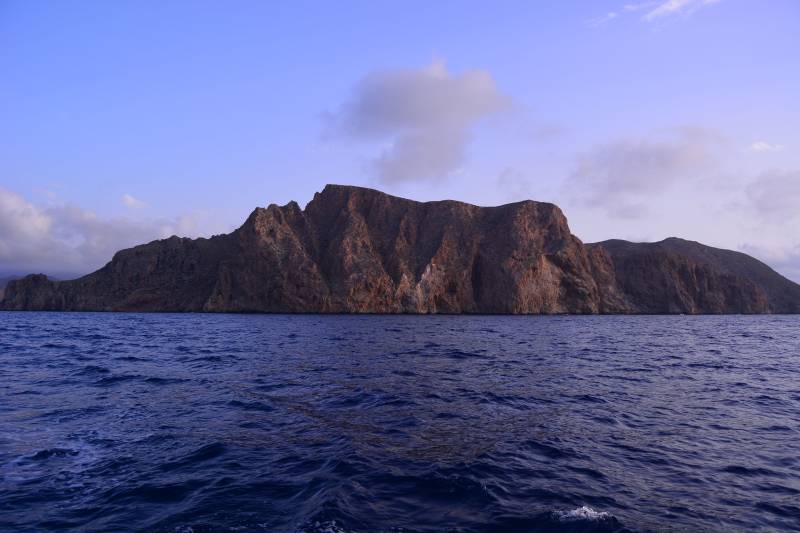
Cabo Cope
Fishing may be an essential productive activity but overfishing can deplete fish populations and disrupt marine ecosystems. Catching larger specimens reduces reproductive capacity, and increasing demand for seafood has led to many species being overexploited.
In response, Spain has created Marine Reserves of Fishing Interest to regenerate marine life, particularly valuable commercial species, and preserve traditional artisanal fishing practices.
These reserves are protected under national fishing law for both ecological and economic purposes. Each year, about 75 scientific permits are issued to conduct research in them, according to the Ministry for the Ecological Transition.
Spain has 12 such marine reserves, of which there are currently two in the Region of Murcia – Cabo de Palos-Islas Hormigas (established in 1995) and Cabo Tiñoso (since 2017) – partly thanks to environmental advocacy, particularly by the association of southeast naturalists (ANSE).
Since 2019, the regional government has worked on declaring a third marine reserve: Cabo Cope, but no timeline has been provided. Murcia would be the Spanish region with the most marine reserves if this goes ahead.
The government is also pushing to expand the Cabo de Palos reserve from 1,898 to 2,088 hectares, including nearby coastal coves. However, modifications are still being made to align the project with regional legal requirements.
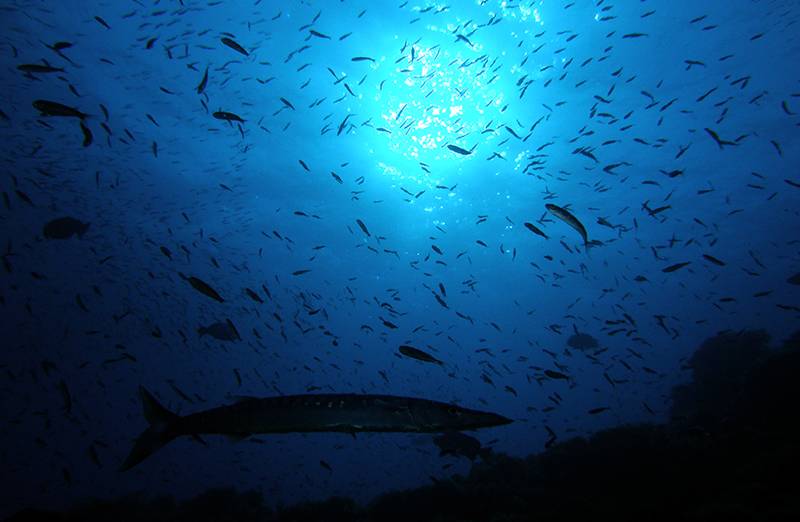 It says this will work because Cabo de Palos has become unrivalled for biodiversity in the Mediterranean over the last 30 years, which in turn has attracted diving tourism.
It says this will work because Cabo de Palos has become unrivalled for biodiversity in the Mediterranean over the last 30 years, which in turn has attracted diving tourism.
To create the Cabo Cope reserve, authorities introduced the proposal to stakeholders in July 2020, and then held four sector-specific meetings in October 2020: with public agencies, professional fishers, recreational fishers and nautical activities, and lastly the diving sector.
Environmental organisations such as ANSE and WWF proposed expanding the reserve’s boundaries north to Puntas de Calnegre and south to Cala Fría, including the Isla del Fraile island.
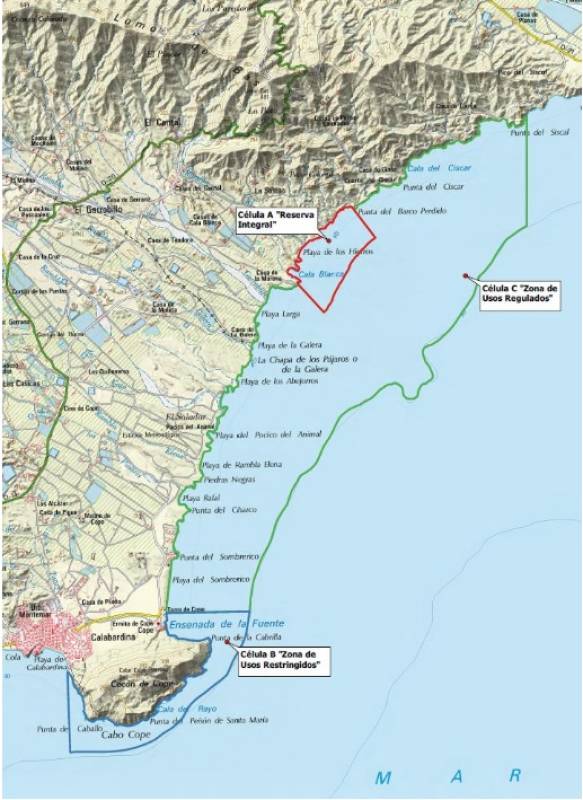 The proposed reserve will span 1,733.3 hectares, with 32.7 hectares in offshore waters. Like other reserves, it will be divided into zones with varying restrictions.
The proposed reserve will span 1,733.3 hectares, with 32.7 hectares in offshore waters. Like other reserves, it will be divided into zones with varying restrictions.
In the Integral Reserve Zone, including Playa de los Hierros and coastal areas between Punta del Barco Perdido and Cala Blanca, all professional and recreational fishing, marine flora/fauna extraction, and recreational diving would be banned and access would only be allowed for authorised scientific research.
Restricted and Regulated Use Zones sometimes allow limited traditional fishing from land and regulated recreational activities (like swimming and diving), but only during daylight.
According to Rubén Vives of environmental organisation Ecologistas en Acción, Murcia needs Cabo Cope to be established and Cabo de Palos extended because marine reserves like these have proven to be effective means to conserve biodiversity and boost sustainable artisanal fishing.
Large boats, trawlers and aggressive methods of fishing are not allowed, but although professional fishers generally respect these protected areas, illegal fishing remains a threat. When enforcement pressure drops, poachers enter to catch large, valuable fish for the black market, the ecologist warns.
To counter this, Murcia’s Maritime Surveillance Unit has increased monitoring using drones.
Biodiversity hotspots
Cabo de Palos-Islas Hormigas is among the most biodiverse underwater sites in Europe, featuring algae, coral, numerous fish species, and even migrating cetaceans. It’s also a historical site of numerous shipwrecks, notably the 1906 sinking of the Italian ship ‘El Sirio’, which claimed around 500 lives.
Cabo Tiñoso-La Azohía is home to some of the best-preserved marine ecosystems in Murcia, notes ANSE. Although it is rich in well-developed communities of diverse species and extraordinarily beautiful and valuable underwater landscapes, it still faces pressure from overfishing and growing tourism.
Spain’s other marine reserves include: Cabo de Gata-Níjar, Levante de Mallorca-Cala Rajada, La Dragonera, Isla de Alborán, Islas Columbretes, Isla Graciosa, Isla de Tabarca, La Palma, La Restinga-Mar de las Calmas and Masía Blanca.
Together, these reserves cover over 105,000 hectares, 10% of which are exclusively protected for scientific use only and no other activities are permitted.
The Spanish government has invested €3.5 million from its Recovery, Transformation and Resilience Plan (PRTR) to modernise equipment in marine reserves so that monitoring of activities can be improved, amongst other objectives.
Recent studies confirm the reserves have led to increased size and biomass of commercial fishing species, as well as greater numbers of other unique species.
See more environmental news about Spain:
OR
Sign up for the Spanish News Today Editors Roundup Weekly Bulletin to get a comprehensive email with all the week’s news for Spain, Murcia, Alicante and Andalucía.
Get a sneak peek – here are a few of our recent Subscription Bulletins:
Discount Special Offer subscription:
36.95€ for 48 Editor’s Weekly News Roundup bulletins!
Please CLICK THE BUTTON to subscribe.















